Get hydraulic hose elbow fittings from China, designed for secure, leak-free connections in hydraulic systems. Our fittings provide durability, corrosion resistance, and precise angle compatibility, ensuring safe fluid transfer, long-lasting operation, and reliable performance in industrial, mobile, and commercial hydraulic applications.
Secure Elbow Connection – Engineered to create tight, leak-proof connections at precise angles, ensuring efficient and reliable fluid transfer in hydraulic systems.
Durable Construction – Made from high-quality metals and alloys, offering excellent strength, corrosion resistance, and wear protection for demanding environments.
Wide Compatibility – Suitable for various hydraulic hoses and equipment, ensuring seamless integration across industrial, mobile, and commercial hydraulic systems.
Easy Installation – Designed for straightforward assembly and secure fitting, reducing labor and installation time while maintaining reliable hydraulic connections.
Kingdaflex is a leading manufacturer of hydraulic hoses and ferrules based in China. We focus on providing high-quality, cost-effective solutions for your hydraulic needs. We can customize any types of the hydraulic hose ferrules to meet your requirement for your hydraulic systems.
Go beyond the standard 90-degree bend! We offer a variety of elbow angles, from compact 45-degrees to space-saving 180-degrees, to precisely fit your application’s layout
Ensure a perfect fit with our extensive range of hose and thread size options. We can match your existing system or create a custom solution for unique needs.
Choose the perfect material for your environment. We offer options from high-strength steel for heavy-duty tasks to corrosion-resistant composites for harsh conditions.
Increase maneuverability with swivel elbow fittings. These allow for hose rotation, reducing strain and making tight connections easier.
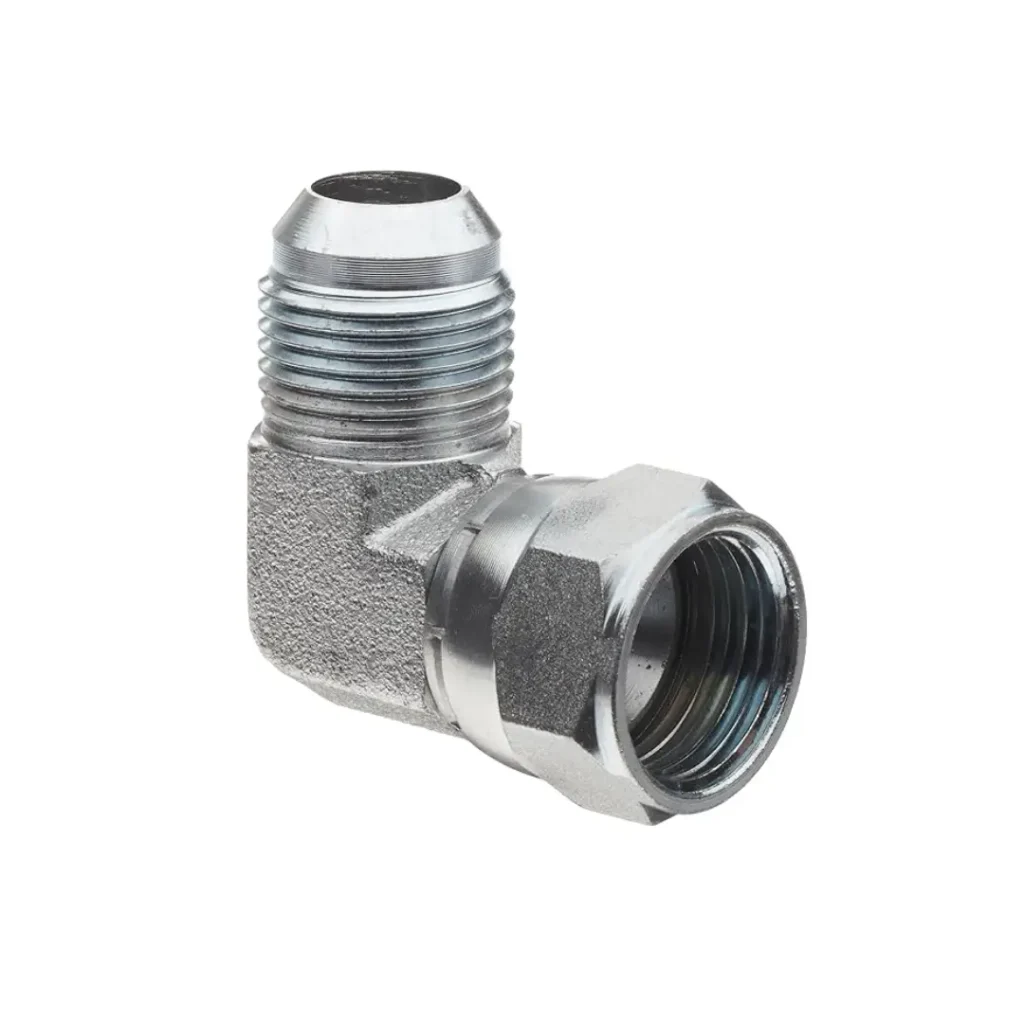
This is the most standard type of hydraulic hose elbow fitting. It allows for a 90-degree change in direction of the hose flow. A 90-degree hydraulic hose elbow fitting is a versatile fitting that can be used in a wide variety of applications. It is important to choose the correct size and material for the fitting to ensure that it can withstand the pressure and temperature of the hydraulic system.
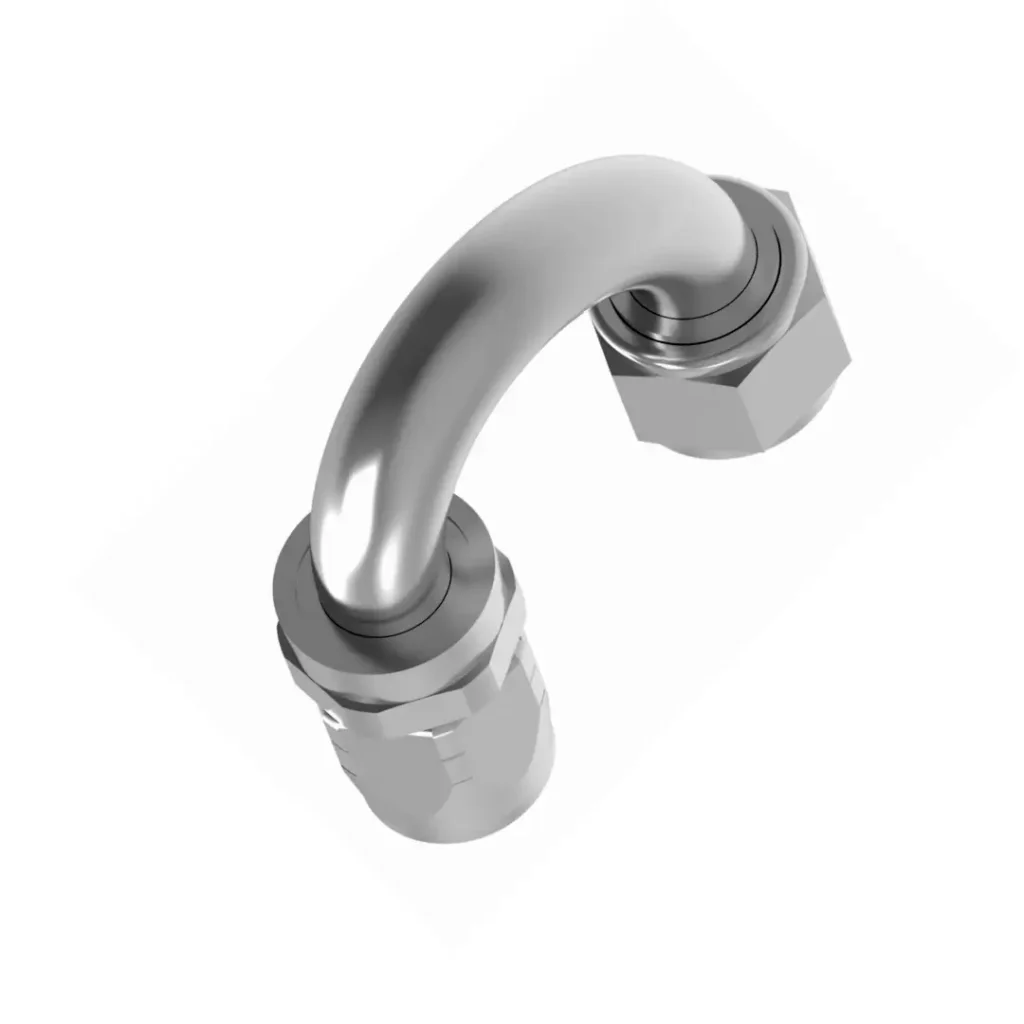
This type of fitting allows for a 180-degree change in direction of the hose flow path. It is a good option for applications where there is no room for a straight hose connection. 180-degree hydraulic hose elbow fittings are less common than 90-degree and 45-degree fittings, but they can be useful in some applications. For example, they can be used to connect two hoses together in a loop, or to change the direction of a hose flow path without having to use two 90-degree fittings.
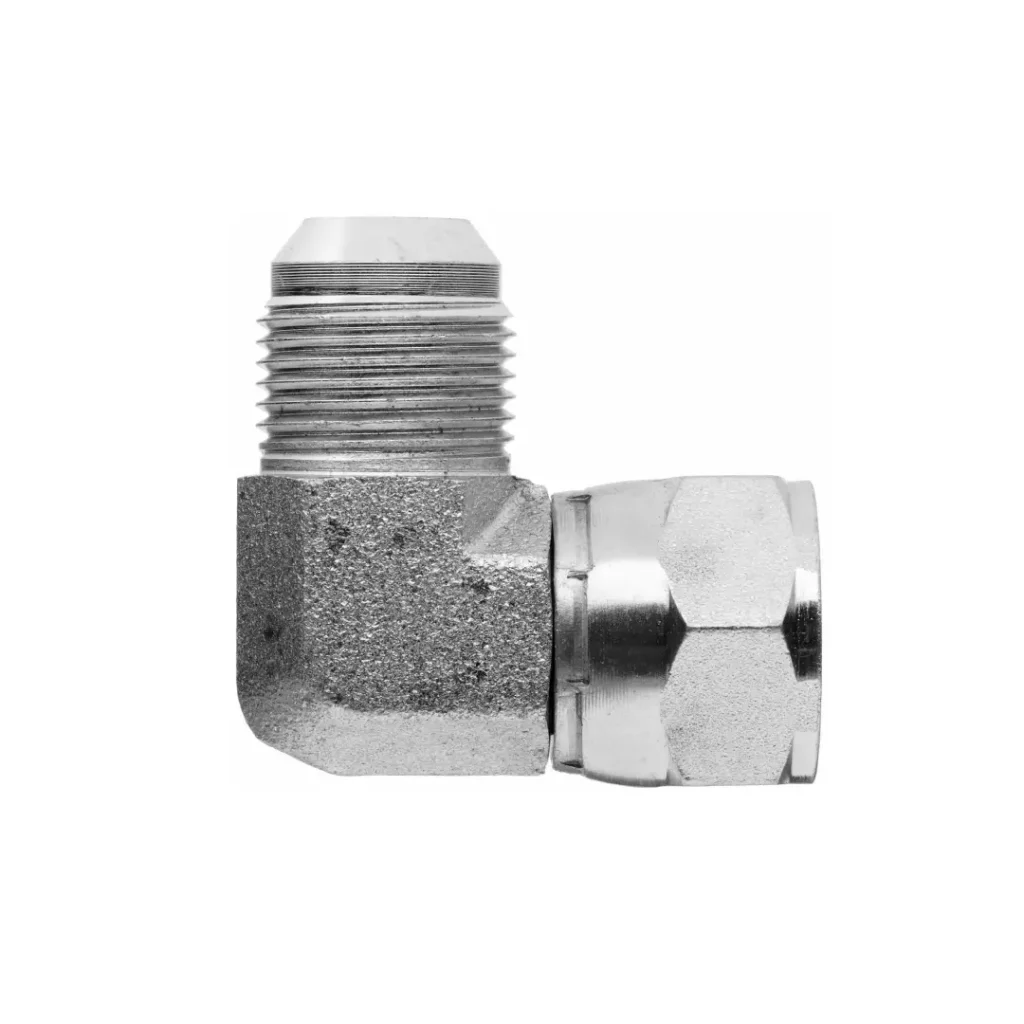
This type of fitting allows the hose to rotate on its axis. This can be helpful in applications where the hose needs to be able to move freely. Swivel hydraulic hose elbow fittings are a good option for applications where the hose is going to be subjected to vibration or movement. They can help to prevent the hose from kinking or twisting, which can lead to leaks or hose failure.

This type of fitting has a banjo-shaped body that allows it to be bolted to a surface. It is a good option for applications where the hose needs to be securely mounted. Banjo hydraulic hose elbow fittings are often used in applications where the hose needs to be connected to a component that is not threaded. They are also a good option for applications where the hose needs to be able to swivel, as some banjo fittings allow for a limited amount of rotation.

These fittings are designed to be used with metric hose sizes. They are available in a variety of angles and materials to meet the needs of your application. Metric hydraulic hose elbow fittings are important to use when working with hydraulic systems that use metric hose sizes. Using the incorrect fitting can lead to leaks or even hose failure.

These fittings are designed to be used with SAE (Society of Automotive Engineers) hose sizes. They are the most common type of hydraulic hose elbow fitting used in North America. SAE hydraulic hose elbow fittings are important to use when working with hydraulic systems that use SAE hose sizes. Using the incorrect fitting can lead to leaks or even hose failure.
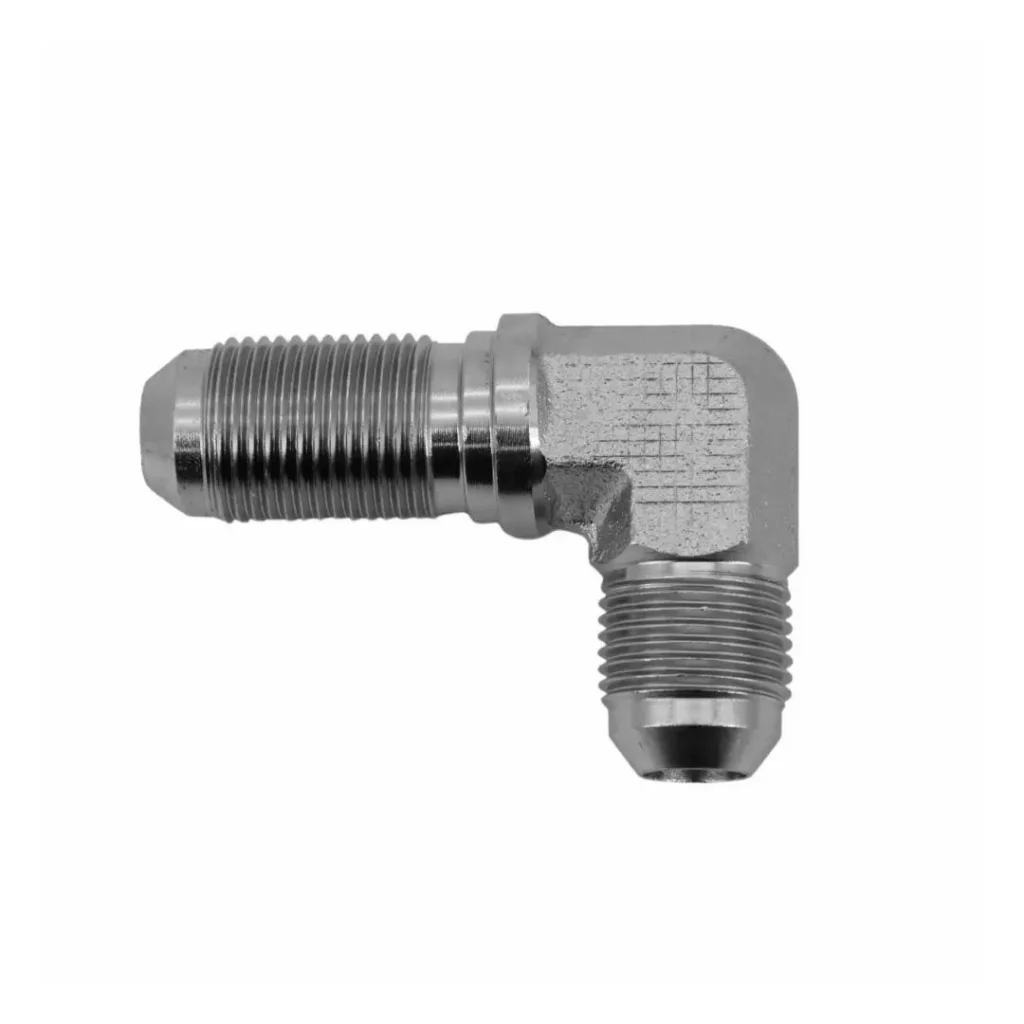
This type of fitting is designed to be mounted through a panel or bulkhead. It is a good option for applications where the hose needs to be connected to a component that is located inside a machine or enclosure. Bulkhead hydraulic hose elbow fittings are often used in applications where there is limited space available on the outside of the machine or enclosure. They can also be used to protect the hose from damage.
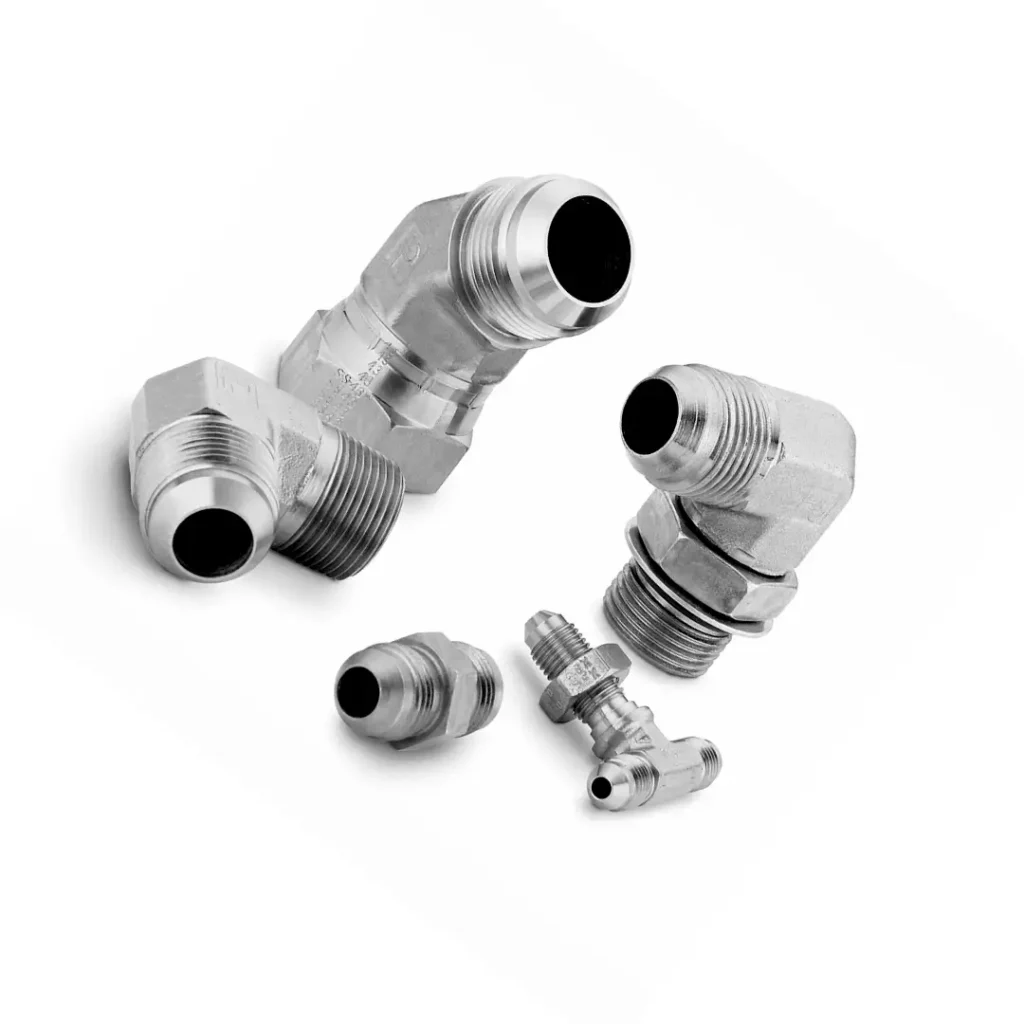
This type of fitting has a flared end that helps to create a tight seal with the hose. It is a good option for high-pressure applications. Flare hydraulic hose elbow fittings are a good choice for applications where the hydraulic system is operating at high pressure. The flared end of the fitting helps to create a tight seal that can withstand the pressure without leaking.
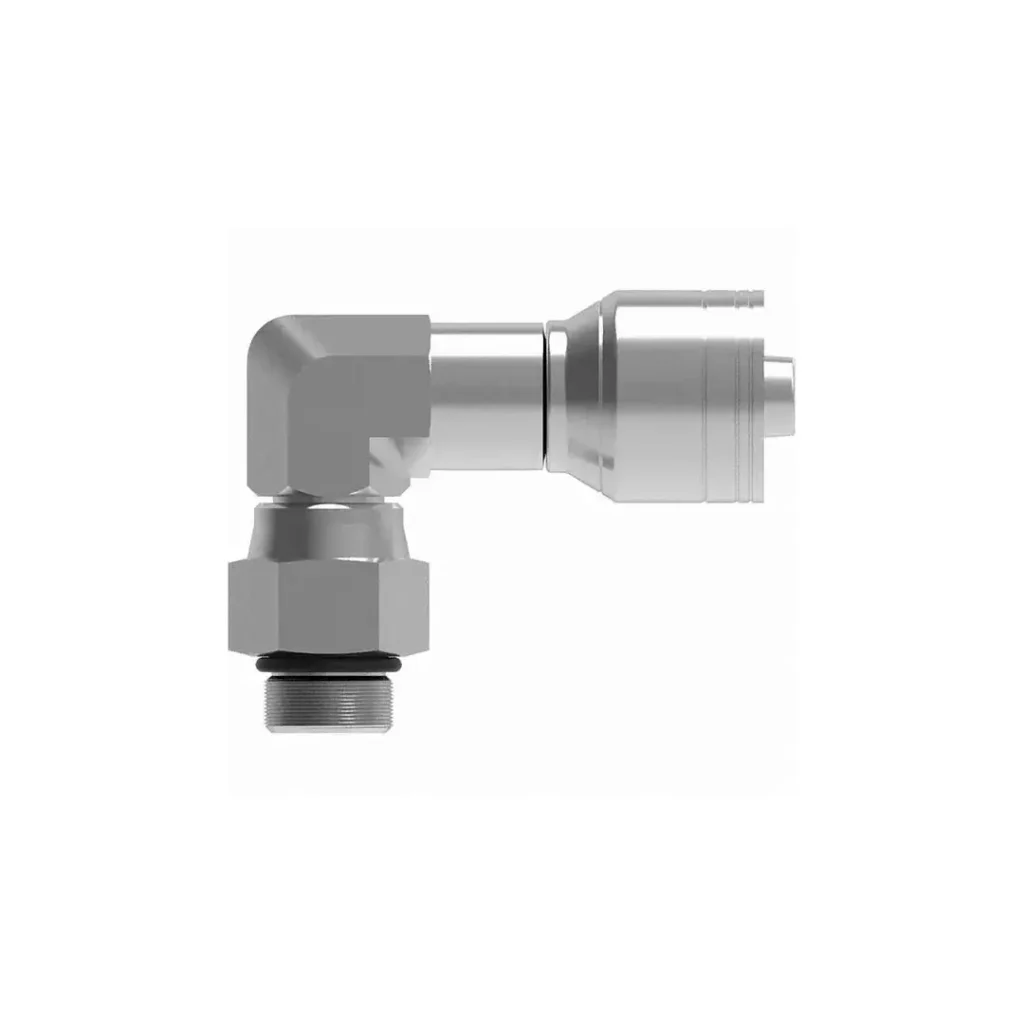
This type of fitting uses an O-ring to create a seal between the fitting and the hose. It is a good option for applications
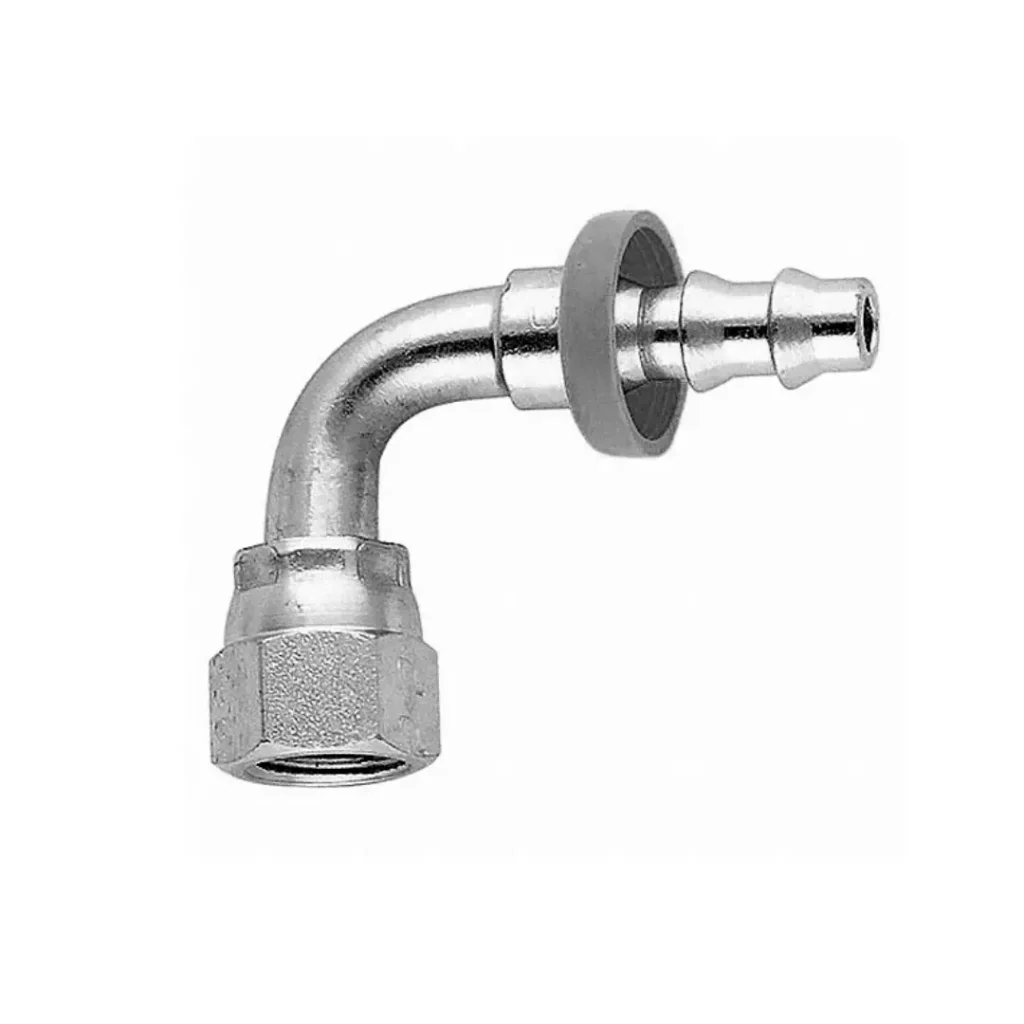
This type of fitting has a barbed end that is inserted into the hose. It is a good option for low-pressure applications and is relatively easy to assemble. Barb hydraulic hose elbow fittings are similar to compression fittings, but they do not require a separate compression sleeve. They are a simple and economical option for low-pressure applications. However, they are not as strong or reliable as compression fittings.

This type of fitting has a flange that is bolted to a flat surface. It is a good option for high-pressure applications where a secure connection is required. Flange hydraulic hose elbow fittings are similar to weld-on fittings, but they offer a detachable connection. They are a good option for high-pressure applications where a permanent connection is not desired.
Hydraulic elbow fittings are crucial for navigating tight spaces within machines or complex systems. Standard straight hoses can create unwanted kinks or interfere with other components. A 45-degree or even a 90-degree elbow fitting allows for a smooth change in direction, optimizing hose placement and preventing tension or strain on the hose.
By allowing for bends and directional changes, elbow fittings reduce stress and wear on hydraulic hoses. Straight hoses forced into awkward positions can experience strain and potential damage over time. Elbow fittings distribute the pressure more evenly, preventing kinks and extending hose lifespan.
Elbow fittings provide precise control over hydraulic fluid flow direction. This is particularly important in applications where specific angles are required to reach components or create a desired fluid path. For instance, a 180-degree elbow fitting can be used to connect two hoses in a loop or reverse the flow direction without needing additional straight hoses and connections.
Strategic use of elbow fittings can enhance the overall efficiency of a hydraulic system. Proper hose routing with elbows minimizes pressure drops and ensures smooth fluid flow. This translates to improved performance and efficient operation of the hydraulic system.
A hydraulic hose ferrule is a metal sleeve crimped onto the end of a hydraulic hose to secure it to a fitting. This creates a tight seal and helps to prevent leaks.
Hydraulic hose ferrules are typically made from steel, stainless steel, brass, or aluminum. The choice of material depends on the application and the type of fluid being conveyed.
The common types of hydraulic hose ferrules include:
To choose the right ferrule, consider the hose size, type, and the application. The ferrule must match the hose diameter and the fitting size. Additionally, ensure compatibility with the type of fluid and operating conditions (pressure, temperature, and environment).
Hydraulic hose ferrules are installed using a crimping machine. The process involves inserting the hose into the ferrule and then using the machine to crimp the ferrule, ensuring a secure and leak-proof connection.